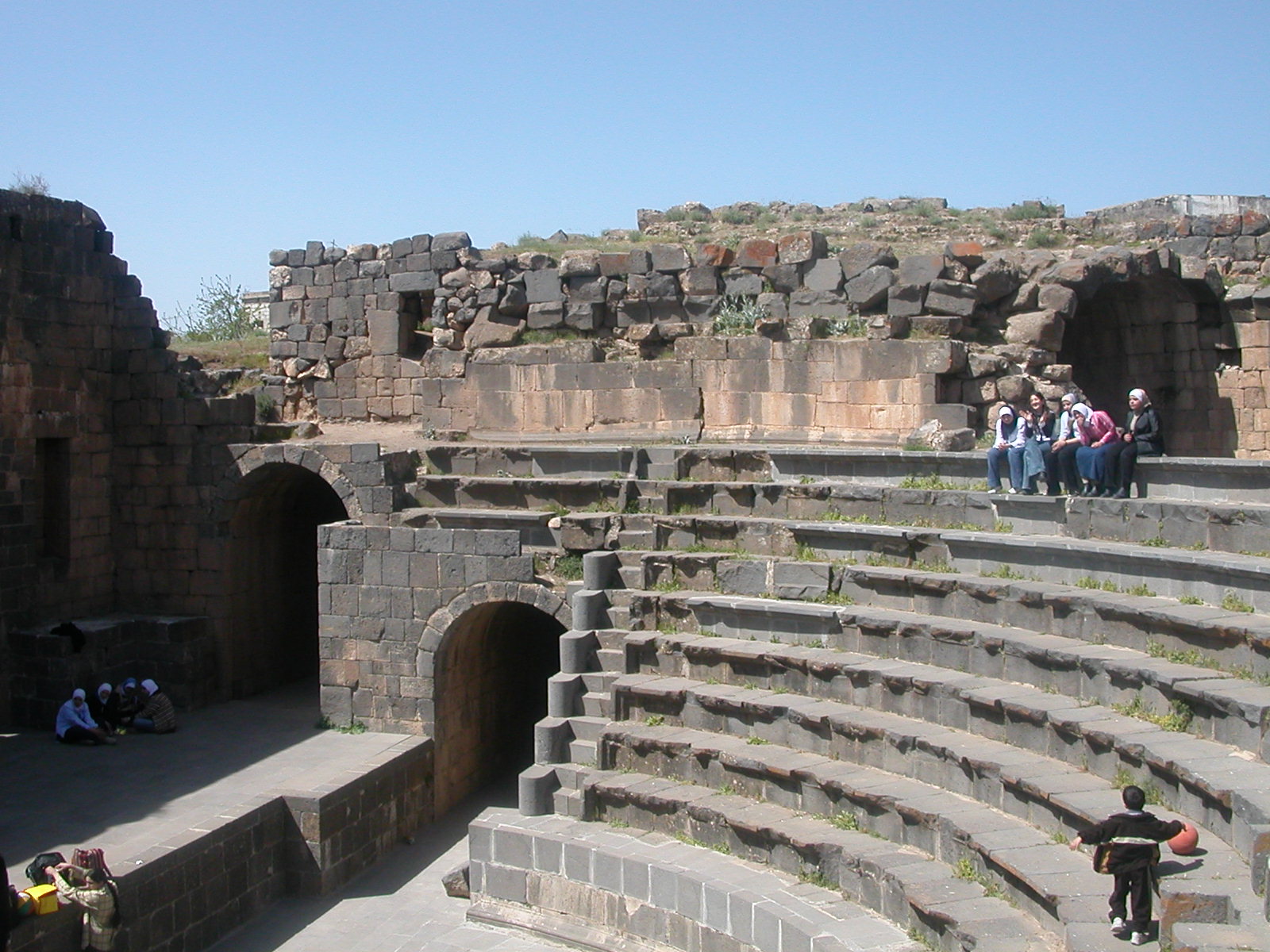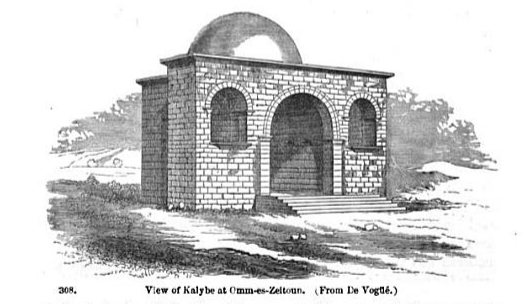|
Shahba
Shahba ( / ALA-LC: ''Shahbā'') is a city located south of Damascus in the Jabal el Druze in As-Suwayda Governorate of Syria, but formerly in the Roman Empire, Roman province of Arabia Petraea. Known in Late Antiquity as Philippopolis (in Arabia), the city was the seat of a Bishopric (see below), which remains a Latin titular see. Its inhabitants are predominantly Druze. History Roman history The oasis settlement now named Shahba had been the native hamlet of the Roman emperor Philip the Arab. After Philip became emperor in 244, he dedicated himself to rebuilding the little community as a ''Colonia (Roman), colonia''. The contemporary community that was replaced with the new construction was so insignificant that one author states that the city can be considered to have been built on virgin soil, making it the last of the Roman cities founded in the East. The city was renamed Philippopolis (a name with homonyms) in dedication to the emperor, who is said to have wanted to t ... [...More Info...] [...Related Items...] OR: [Wikipedia] [Google] [Baidu] |
Shahba District
Shahba District () is a district of the Suwayda Governorate in southern Syria. The administrative centre is the city of Shahba Shahba ( / ALA-LC: ''Shahbā'') is a city located south of Damascus in the Jabal el Druze in As-Suwayda Governorate of Syria, but formerly in the Roman Empire, Roman province of Arabia Petraea. Known in Late Antiquity as Philippopolis (in Arabia .... At the 2004 census, the district had a population of 71,949. Sub-districts The district of Shahba is divided into four sub-districts or nawāḥī (population as of 2004): See also * List of populated places in as-Suwayda Governorate References Districts of as-Suwayda Governorate {{AsSuwaydaSY-geo-stub ... [...More Info...] [...Related Items...] OR: [Wikipedia] [Google] [Baidu] |
As-Suwayda Governorate
As-Suwayda or Al-Suwayda Governorate () is one of the fourteen governorates (provinces) of Syria. It is the southernmost governorate, covering an area of 5,550 km², and is part of the historic Hawran region. The capital and largest city of the governorate is al-Suwayda. Geographically the governorate comprises almost all of Jabal al-Druze, the eastern part of Lejah, and a part of the arid eastern steppe of Harrat al-Shamah. Most inhabitants of As-Suwayda are employed in agriculture, cultivating crops such as grapes, apples, olives, and wheat. Additionally, As-Suwayda is home to numerous archaeological sites. This governorate is unique in Syria as it has a Druze majority. Additionally, it has integrated Christian communities that have long coexisted harmoniously with the Druze in these mountains. Demographics and population The governorate has a population of about 375,000 inhabitants (est. 2011).Statistics from It is the only governorate in Syria that has a Druze ... [...More Info...] [...Related Items...] OR: [Wikipedia] [Google] [Baidu] |
Philip The Arab
Philip I (; – September 249), commonly known as Philip the Arab, was Roman emperor from 244 to 249. After the death of Gordian III in February 244, Philip, who had been Praetorian prefect, rose to power. He quickly negotiated peace with the Sasanian Empire and returned to Rome to be confirmed by the Roman Senate, Senate. According to many historians, he was possibly the first Christian Roman Emperor. Although his reign lasted only five years, it marks an unusually stable period in a century that is otherwise known for having been turbulent. Near the end of his rule, Philip commemorated Ab urbe condita#Use, Rome's first millennium. In September 249 he was killed during or shortly after the Battle of Verona (249), Battle of Verona against the usurper Decius, Trajan Decius, who was subsequently recognized by the Senate as his successor. Born in modern-day Shahba#Roman history, Shahba, Syria, in what was then Arabia Petraea, Philip's ethnicity was most likely Arabs, Arab. While h ... [...More Info...] [...Related Items...] OR: [Wikipedia] [Google] [Baidu] |
Syria
Syria, officially the Syrian Arab Republic, is a country in West Asia located in the Eastern Mediterranean and the Levant. It borders the Mediterranean Sea to the west, Turkey to Syria–Turkey border, the north, Iraq to Iraq–Syria border, the east and southeast, Jordan to Jordan–Syria border, the south, and Israel and Lebanon to Lebanon–Syria border, the southwest. It is a republic under Syrian transitional government, a transitional government and comprises Governorates of Syria, 14 governorates. Damascus is the capital and largest city. With a population of 25 million across an area of , it is the List of countries and dependencies by population, 57th-most populous and List of countries and dependencies by area, 87th-largest country. The name "Syria" historically referred to a Syria (region), wider region. The modern state encompasses the sites of several ancient kingdoms and empires, including the Eblan civilization. Damascus was the seat of the Umayyad Caliphate and ... [...More Info...] [...Related Items...] OR: [Wikipedia] [Google] [Baidu] |
Arabia Petraea
Arabia Petraea or Petrea, also known as Rome's Arabian Province or simply Arabia, was a frontier Roman province, province of the Roman Empire beginning in the 2nd century. It consisted of the former Nabataean Kingdom in the southern Levant, the Sinai Peninsula, and the northwestern Arabian Peninsula. Its capital was Petra. It was bordered on the north by Syria (Roman province), Syria, on the west by Judea (Roman province), Judaea (renamed Syria Palaestina in AD 135) and Roman Egypt, Egypt, and on the south and east by the rest of Arabia, known as Arabia Deserta and Arabia Felix. The territory was annexed by Emperor Trajan, like many other eastern frontier provinces of the Roman Empire, but held onto, unlike Roman Armenia, Armenia, Mesopotamia (Roman province), Mesopotamia and Assyria (Roman province), Assyria, well after Trajan's rule, its desert frontier being called the Limes Arabicus. It produced the Emperor Philip the Arab, Philippus, who was born around 204. As a frontier ... [...More Info...] [...Related Items...] OR: [Wikipedia] [Google] [Baidu] |
Districts Of Syria
The 14 governorates of Syria, or ''muhafazat'' (sing. ''muhafazah''), are divided into 65 districts, or ''manatiq'' (sing. ''mintaqah''), including the city of Damascus. The districts are further divided into 281 subdistricts, or ''nawahi'' (sing. ''nahiya''). Each district bears the same name as its district capital. Districts and subdistricts are administered by officials appointed by the governor, subject to the approval of the minister of the interior. These officials work with elected district councils to attend to assorted local needs, and serve as intermediaries between central government authority and traditional local leaders, such as village chiefs, clan leaders, and councils of elders. List of districts The 65 districts are listed below by governorate (with capital districts in bold text). The city of Damascus functions as a governorate, a district and a subdistrict. Parts of Quneitra Governorate have been under Israeli-occupied territories, Israeli occupation since 19 ... [...More Info...] [...Related Items...] OR: [Wikipedia] [Google] [Baidu] |
Kalybe (temple)
A kalybe (; ) is a type of temple found in the eastern Roman Empire dating from the 1st century and after. They were intended to serve as a "public facade or stage-setting, solely for the display of statuary." "[T]hey were essentially stage-sets for ritual enacted ''in front'' of them." The kalybe has been associated with the Roman imperial cult. The first kalybe to be identified as a distinct type was in Umm Iz-Zetun (or Zetum),For one modern spelling of the toponym. described by Eugène-Melchior de Vogüé in 1867. Together with the temple he found two Greek inscriptions describing the structure as a "kalybe." Other than these, the only occurrence of the term is in a lexicon of Hesychius of Alexandria from the 5th century; since that time more than seven similar temples have been identified in Roman Syria. In addition to Umm Iz-Zetum these include Shaqqa (''Saccaea''), Il-Haiyat, Shahba (''Philippopolis'') (built around 245 by the Emperor Philip the Arab), Qanawat (''Kanatha'' ... [...More Info...] [...Related Items...] OR: [Wikipedia] [Google] [Baidu] |
Jabal El Druze
Jabal al-Druze (), is an elevated volcanic region in the Suwayda Governorate of southern Syria. Most of the inhabitants of this region are Druze, and there are also significant Christian communities. Safaitic inscriptions were first found in this area. The State of Jabal Druze was an autonomous area in the French Mandate for Syria and the Lebanon from 1921 to 1936. In the past, the name Jabal al-Druze was used for a different area, located in Mount Lebanon. In Syria, most Druze reside in Suwayda Governorate, which encompasses almost all of Jabal al-Druze. This governorate is unique in Syria as it has a Druze majority. Additionally, it has integrated Christian communities that have long coexisted harmoniously with the Druze in these mountains. In the 1980s Druze made up 87.6% of the population, Christians (mostly Greek Orthodox) 11% and Sunni Muslims 2%. In 2010, the As-Suwayda governorate has a population of about 375,000 inhabitants, Druze made up 90%, Christians 7% and ... [...More Info...] [...Related Items...] OR: [Wikipedia] [Google] [Baidu] |
Roman Theatre (structure)
Roman theatres derive from and are part of the overall evolution of earlier Ancient Greek theatre (structure), Greek theatres. Much of the architectural influence on the Romans came from the Greeks, and theatre structural design was no different from other buildings. However, Roman theatres have specific differences, such as generally being built upon their own foundations instead of earthen works or a hillside and being completely enclosed on all sides. Architecture Roman theatres were built in all areas of the Roman Empire, Empire, from Spain to the Middle East. Because of the Romans' ability to influence local architecture, we see numerous theatres around the world with uniquely Roman attributes. Similarities exist between the theatres and Roman amphitheater, amphitheaters of ancient Rome. They were constructed out of the same material, Roman concrete, and provided a place for the public to go and see numerous events. However, they are two entirely different structures, with ... [...More Info...] [...Related Items...] OR: [Wikipedia] [Google] [Baidu] |
Triumphal Arch
A triumphal arch is a free-standing monumental structure in the shape of an archway with one or more arched passageways, often designed to span a road, and usually standing alone, unconnected to other buildings. In its simplest form, a triumphal arch consists of two massive Pier (architecture), piers connected by an arch, typically crowned with a flat entablature or Attic style, attic on which a statue might be mounted or which bears commemorative inscriptions. The main structure is often decorated with carvings, sculpted reliefs, and dedications. More elaborate triumphal arches may have multiple archways, or in a tetrapylon, passages leading in four directions. Triumphal arches are one of the most influential and distinctive types of ancient Roman architecture. Effectively invented by the Romans, and using their skill in making arches and vaults, the Roman triumphal arch was used to commemorate victorious generals or significant public events such as the founding of new Colonia ... [...More Info...] [...Related Items...] OR: [Wikipedia] [Google] [Baidu] |
Thermae
In ancient Rome, (from Greek , "hot") and (from Greek ) were facilities for bathing. usually refers to the large Roman Empire, imperial public bath, bath complexes, while were smaller-scale facilities, public or private, that existed in great numbers throughout Rome. Most Roman cities had at least one – if not many – such buildings, which were centers not only for bathing, but socializing and reading as well. Bathhouses were also provided for wealthy private Roman villa, villas, domus, town houses, and castra, forts. They were supplied with water from an adjacent river or stream, or within cities by aqueduct (watercourse), aqueduct. The water would be heated by fire then channelled into the caldarium (hot bathing room). The design of baths is discussed by Vitruvius in ''De architectura'(V.10) Terminology '','' '','' '','' and may all be translated as 'bath' or 'baths', though Latin sources distinguish among these terms. or , derived from the Greek language, G ... [...More Info...] [...Related Items...] OR: [Wikipedia] [Google] [Baidu] |







